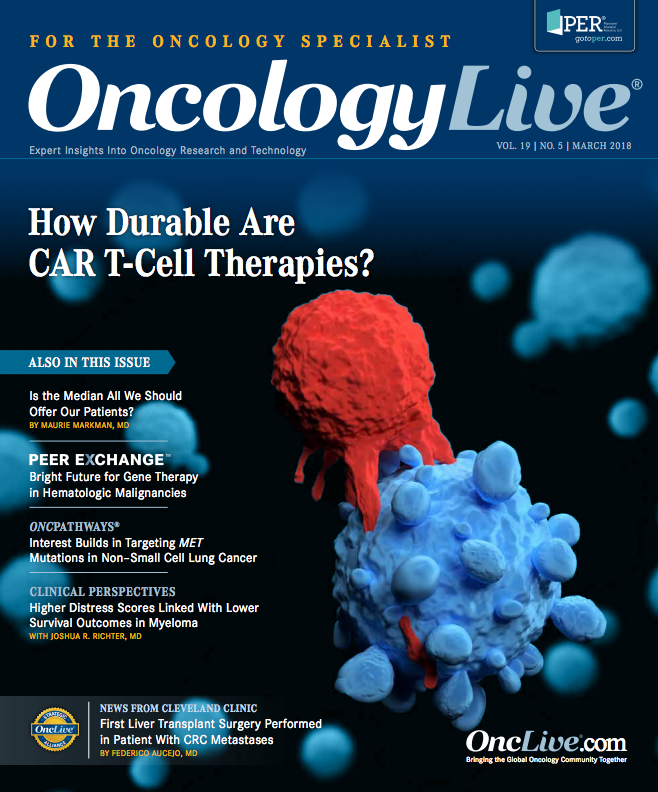Publication
Article
Oncology Live®
Is Your Practice Ready for New Rules on Hazardous Drug Management
Author(s):
Among community oncology practices, the US Pharmacopeia Convention’s General Chapter draft guidelines have already raised the bar for hazardous drug management and imposed costs for compliance.
money-americanflag

Among community oncology practices, the US Pharmacopeia (USP) Convention’s General Chapter <800> draft guidelines have already raised the bar for hazardous drug (HD) management and imposed costs for compliance.
The impact of these changes will be significant. Prior to the publication of USP <800>, most community oncology practices used a biosafety cabinet (BSC) and personal protective equipment for handling HDs. Although these offered some protection, formal education about HD management was all but nonexistent, and the lack of detailed policy and procedures made enforcement and optimal use of HD equipment a significant challenge. USP <800> brought this issue to the forefront by providing a clear explanation of the spectrum of safeguards needed to protect employees.
Implementation Delayed
Preparing for USP <800>
In the community practice setting, readiness for enforcement of USP <800> varies from full compliance (rare) to no compliance decision having been made (also rare). Although not all are in conformance, most community oncology practices intend to comply.USP <800> was intended to be enforceable starting on July 1, 2018. However, the final document release has been postponed to coordinate with the scheduled December 1, 2019, publication of the USP <797> revision. These guidelines cover pharmaceutical compounding and sterile preparations. The intent is to provide a unified approach to compounding practices that is safe for both patients and employees. USP <797> describes responsibilities of drug compounding personnel, training, facilities, environmental monitoring, and storage and testing of finished preparations. USP <800> describes requirements for HDs; facility and engineering controls; procedures for deactivating, decontaminating and cleaning; spill control; and documentation.Many oncology practices have been preparing for USP <800> for a long time and are well on their way to compliance. However, for those just getting started, the following steps may make the process more manageable:
Assign a project lead.
Although USP <800> clearly states it is the responsibility of all practice employees who handle HDs to understand the chapter’s requirements, for ideal stewardship, each practice should designate a person to oversee implementation of USP <800> procedures and compliance.
Identify hazardous drugs in the practice.
The practice must identify the HDs it currently handles to ensure proper management in the future. Practices should closely read the National Institute for Occupational Safety and Health’s 2016 list of HDs to see which are classified as hazardous.
Assess how HDs traverse the practice.
Obviously, practice administrators and managers need to thoroughly understand USP <800> requirements. Once comfortable with these requirements, practice members should focus on how HDs traverse the practice from the point of receipt to inventory, storage, compounding, administration, and, finally, disposal. This will identify trouble spots where compliance is lacking.
USP <800> is specific about design and engineering controls, so evaluate the compounding area and BSC ventilation.
Prior to the date that USP <800> becomes enforceable, a drug compounding hood that vents to room air is acceptable. After December 1, 2019, USP <800> requires that all BSC hoods be vented to the outside environment.
Next, a practice should examine the compounding room design, as there are minimum requirements that must be met. In addition to the requirement for BSC hoods that vent to the outside, all quantities of HDs must now be compounded in a segregated, negative-pressure room that is properly ventilated.
One of the standards for this room is that it must be constructed of a specific type of material. This represents the greatest challenge to general compliance because most community practices do not yet conform to this requirement.
If facility and engineering changes are needed, it is important to understand these may require 12 to 18 months to complete. If possible, it may be helpful to delay this aspect of compliance until the publication of the second-draft revision (late 2018) of USP <797>. Although unfinished, this draft should provide greater clarity about facility requirements.
Evaluate processes for personal protective equipment (PPE), and determine the current level of compliance.
Understanding the degree to which staff members embrace PPE is critical and necessary to developing improvement initiatives. Once management has a good understanding of their staff’s current compliance level, they can identify improvements and begin drafting policies and procedures. Many templated products are available that make this job a bit easier. Training processes that include competency exams should be established, and strategies should be developed to ensure that the consistent use of PPE becomes part of the practice culture.
In most community practices, PPE compliance will require a change in practice culture. Establishing this culture can be challenging. Management must stress the need for safe handling of HDs at every opportunity and take responsibility for developing practice improvement policies that educate, establish accountability, and drive compliance.
Costs Vary
USP <800> compliance requires policies and procedures that outline staff training, validation of skills, and documentation of staff knowledge of HD safe handling. Policy development is the low-cost piece of this challenge and, as such, should be done first.Each USP <800> solution is unique. What works for one practice may not be the solution for another. Until the final versions of USP <797> and <800> are released, it will be difficult to determine the cost of meeting requirements. However, estimates can be made. Costs for PPE are minimal. A 3-to-4-physician practice will incur an additional $5000 annually for PPE. In most cases, facility improvements should be achievable with an investment of $50,000 or less. A new expense resulting from USP <800> arises from the required use of closed-system transfer devices (CSTDs). CSTDs are required for administration of all HDs. A 4-provider practice should anticipate an additional annual expense in the range of $40,000 to $50,000 for these items. If the practice incorporates CSTDs into the compounding process (in the BSC), which is recommended but not required by USP <800>, this could require an additional annual expense of $50,000 to $60,000.
Uncertainties Over Enforcement and Noncompliance
Most Recognize the Need for USP <800>
Practices electing to do medium- to high-risk compounding (category 2, under a reclassification anticipated in the updated USP <797>) beyond 12-hour-use dating will require a fully engineered clean room, which can be extremely expensive. This can cost as much as $200,000 or more. For this reason, practice management must have a thorough understanding of what its clinical operation requires from its admixture/compounding program.As with USP <797>, uncertainties exist regarding USP <800> enforcement. Compliance enforcement will vary state by state, depending on medicine and pharmacy board rules and regulations. In states where the respective board of pharmacy has jurisdiction over physician practices, one should anticipate that agency will enforce compliance. It is possible a state’s public health department may be charged with the task. However, in most states, there is no designated agency to enforce compliance. Because employee safety is involved, it is reasonable to anticipate the state office of the Occupational Safety and Health Administration eventually will be responsible.According to a joint statement in 2015 by the American Society of Clinical Oncology, the Hematology/Oncology Pharmacy Association, and the Oncology Nursing Society, over the past 2 decades, at least 100 studies have provided evidence of HD contamination in the work environment.1 Consequently, most community oncology practices have had in place some degree of safe handling of HDs in their practice. These practices welcome the guidance USP <800> will provide and will fine-tune their facilities and processes to line up with USP <800> requirements.
Although the deadline for compliance has been delayed, early implementation of USP <800> requirements is strongly recommended. Practices are debating whether they should comply with USP <800> or risk penalties. They should ask themselves whether they want to be leaders or followers in community oncology. Being a leader carries an obligation to be at the forefront of patient and employee safety―and that means fully embracing USP <800>.
References
- Tomkins J. Ensuring healthcare worker safety when handling hazardous drugs: the joint position statement from the Oncology Nursing Society, the American Society of Clinical Oncology, and the Hematology/Oncology Pharmacy Association. J Oncol Pract. 2015;11(4):278-279. ascopubs.org/ doi/full/10.1200/jop.2015.004978. Accessed November 22, 2017.
- US Pharmacopeial Convention. USP general chapter <800>: hazardous drugs—handling in healthcare settings. USP website. usp.org/sites/default/ files/usp/document/our-work/healthcare-quality-safety/general-chapter-800.pdf. Published December 1, 2017. Accessed January 10, 2018









